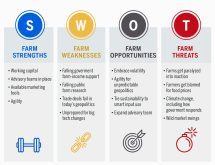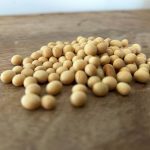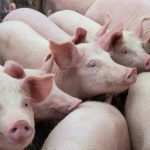Like many farmers I am worried about the the misunderstandings the general public has about farming and where their food comes from. This concern has prompted me to spend many hours in classrooms talking to students about agriculture.
For a number of years, I was a regional co-ordinator for the classroom agriculture program arranging speakers for grade four classes in central Alberta and I sought farmers and agricultural professionals to come in and talk about agriculture and food.
The experience really opened my eyes to the information gap. Easy questions came up, such as “Does chocolate milk come from brown cows?” but there were also complex questions about pesticide use and animal handling practices.
Read Also

Farmland values: assumptions and realities
Where farmland values are headed and what decisions farmers should make
These questions became opportunities to explain why farmers do what we do, the care we take doing it, and why these practices are safe for the farmer, consumer and environment.
Conversations between the public and farmers are becoming increasingly important. While farmers are still among the most trusted professions, a recent Canadian Centre for Food Integrity survey found only 29 per cent of Canadians believe farmers are good stewards of the land. Such a low perception of environmental stewardship is bound to lead to more confrontation and increased regulation of our industry unless farmers take the initiative and address consumer concerns.
Unfortunately, when it comes to dealing with public perception about farming, farmers are often our own worst enemies. Instead of using an issue to enlighten the public, too often we simply ignore the contention or, worse yet, contribute to it.
The Federal Private Member’s Bill 234 is the perfect example of this.
This is not a column for or against Bill 234. Nor is it an argument for or against the removal of the carbon tax on the on-farm use of natural gas and propane for heating farm buildings or drying grain. And it is definitely not an argument about climate change in any way, shape or form.
What I do want to do in this column, though, is to challenge the argument from politicians and in farm circles that if farmers have to pay carbon tax on natural gas, it will have an impact on food prices.
That is the message consumers are hearing, and it may seem politically shrewd because of the importance of food and because food prices are high.
Yet it gives consumers the impression that the carbon tax is a primary cause of rising food prices and that rescinding even the amount of the tax farmers pay on natural gas for heating and grain drying will reduce food prices.
But will food prices actually drop if this tax is removed? Or is it simply a lot of political spin?
Or, let’s put it a more accurate way: Does this argument seek a short-term cut in production costs at the expense of long-term consumer perceptions on farmers, farming and food pricing?
Unfortunately, there is likely little truth to claim that the farm use of natural gas will reduce food prices. And it is this that should be a big part of what we talk about each and every time about natural gas and propane taxes.
Instead of telling consumers that food prices are somehow linked to the amount of tax that farmers pay, this is a great teaching moment for farmers to tell consumers that farmers do not set the price of food, that we are not price setters but price takers, and that the carbon tax cannot be passed on from the farmer to the consumer but has to be totally absorbed by the farm operation.
Otherwise, if this carbon tax carve-out is adopted and the price of food does not drop, consumers will perceive farmers as pocketing money that should be passed on in the form of lower food prices.
It will be like what happens when the price of oil drops but the price of the gas at the pump stays high. Farmers will be seen as gouging consumers.
Message 1: Farms are not responsible for high food prices
In my opinion, here are the messages that farmers should be presenting to consumers each time Bill 234 comes up.
First is that farmers are not responsible for high food prices. In 2023 the National Farmers Union compared the farm-gate price of wheat and corn with the retail costs of bread made from that wheat and of corn flakes made from the corn. The results show a complete decoupling of farm-gate crop prices and the cost of the food products derived from those commodities.
The increased price of food isn’t a result of farmer profiteering. Instead, higher costs rise throughout the food chain, including manufacturing costs and retail pricing. A dominant factor is the lack of competition throughout the food chain. For example, five companies now control 75 per cent of the retail food market in Canada. Just two companies supply 80 percent of the bread in Canada and one of those companies is also one of the “big five” retailers.
This lack of competition beyond the farm gate allows manufacturing, processing and retail food costs to be passed on to the consumer whereas individual farmers do not have the ability to set prices for their production of the grains grown for the breads and cereals.
Grains grown in Canada are sold on a world price basis. Prices offered to farmers do not reflect the cost of production, but rather the worldwide supply of grains. Yes, there may be short-term regional differences in prices due to local supply and demand constraints, but these quickly work themselves out given the lack of grain-buying competition. The grain market that farmers sell into is dominated by just a few global grain companies.
No question, the carbon tax will add to the cost of production for farmers who use natural gas to heat barns and greenhouses and who use it for grain drying, so the most important point to make with consumers is that farmers are price takers, not price setters. High food prices are the result of pricing decisions made beyond the farm gate.
Message 2: The real significance of the carbon tax
The second perception that farmers need to challenge is the impact that a carbon tax will actually have on food prices.
For example, a bushel of wheat yields about 45 loaves of bread. Currently a farmer earns about $9 for that bushel of wheat. So, the farm share of that loaf of bread is about 20 cents. The cost of natural gas used to dry the wheat used in one loaf of bread is a fraction of a cent, and the tax on that fraction of a cent makes the impact on the price of a loaf of bread negligible.
Furthermore, not every bushel of wheat grown on the Prairies that is used for bread-making is dried with natural gas. In fact, the majority of grain grown in Western Canada is not artificially dried. Alberta Financial Services Corporation asks farmers each fall to indicate how much of their grain is dried with added heat. The total is less than 10 per cent for most crops grown. For wheat last year it was 40 per cent.
Nor can we be certain from AFSC data how much energy was actually used to dry wheat since there is no tracking of how much drying was required. Drying wheat from 16 per cent to 14 requires a lot less energy than drying from 20 per cent.
Regardless, even if farmers could somehow recoup their fuel costs for drying grain, the added drying cost would have been too small when calculated to the price of a single loaf of bread.
This is not to say that the tax will not be a real cost for farmers. We only know, though, that it is a cost that the farm operation will not be able to recover from the consumer. To get the full story, read the “Shocking Truth” below.
The shocking truth of food prices
If we really want to shock consumers, let’s point out Canadians spend a mere 11 per cent of their income on food, and according to a 2022 Dalhousie University study, that means Canada is among the five best countries in the world for food affordability.
Yes, there are clear challenges. The report adds: “Those with the highest incomes spent 5.2 per cent on food, while those living with the lowest incomes spent up to 23 per cent of their income on food. That means those with the lowest income most significantly felt the burden of increased food costs.”
But as the report also noted, “farmers and farm workers receive a small portion of the proceeds. In Canada, agricultural sector wages are below the average, with weekly earnings about 21 per cent less than other sectors. In 2021, U.S. farmers and farm workers received only 7.4 cents of every dollar spent on food. In 2013, they received 10.2 cents.”
Other studies find similar results. “Farmers are NOT the reason for food price inflation” is the conclusion of the Agricultural Producers Association of Saskatchewan study Farmers and Food Prices released December 5, 2023, which reports “in spite of increased food prices, retail sales data revealed Canadians spent less on food last year than in 2022; down from $261.24 per capita/month in August 2022 to $252.89 per capita in August 2023,either by reducing the quantity or quality or changes in shopping habits.”
So, are high food prices really the problem when Canada’s average spending on food as a percentage of household income is among the lowest in the world and consumer spending on food is actually down over the past year in spite of high food prices.
We should all consider this. Despite farm commodity prices falling significantly over the past year, the 2024 Food Price Forecast put out by the universities of Dalhousie, Guelph and Saskatchewan is predicting food prices to rise in 2024, with bakery goods climbing 5 to 7 per cent, dairy 1 to 3 per cent, and meat and vegetables 5 to 7 per cent.
















